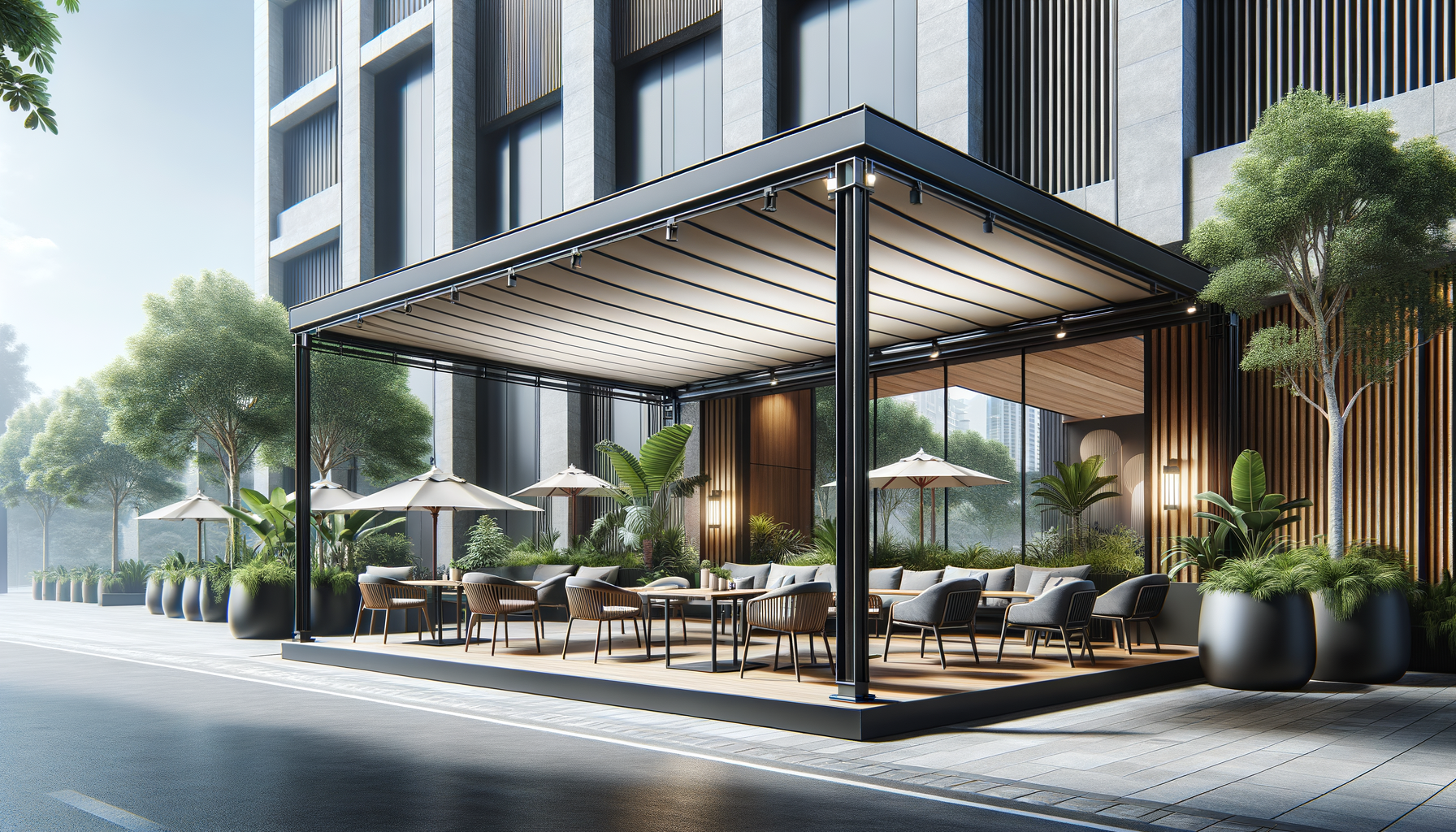Understanding the Versatility of Outdoor Awnings
Outdoor awnings are an excellent addition to any exterior space, offering both aesthetic appeal and functional benefits. Whether you’re looking to create a shaded retreat in your backyard or provide a welcoming entrance to a commercial establishment, awnings can be tailored to suit your specific needs. They offer protection from the elements, helping to keep spaces cool in the summer while also providing shelter from rain. The versatility of awnings means they can be used in a variety of settings, from residential patios to bustling cafes, making them a popular choice for homeowners and business owners alike.
One of the key advantages of outdoor awnings is their ability to enhance energy efficiency. By blocking direct sunlight, awnings can significantly reduce indoor temperatures, leading to lower air conditioning costs. This not only saves money but also contributes to a more sustainable environment. Additionally, awnings can protect furniture and flooring from sun damage, extending the lifespan of your outdoor decor.
Moreover, awnings come in a variety of designs, materials, and colors, allowing you to customize them to match your aesthetic preferences. From retractable models that provide flexibility to fixed installations for permanent coverage, the options are vast. With the right choice, an awning can transform an ordinary outdoor space into a stylish, functional area.
Choosing the Right Material for Your Awning
The material of an awning is crucial in determining its durability and effectiveness. Common materials include canvas, acrylic, and metal, each offering distinct benefits. Canvas awnings are known for their classic look and are often treated to be water-resistant and UV-resistant. Acrylic fabrics, on the other hand, are highly durable and resistant to mildew, making them ideal for humid climates. Metal awnings, typically made from aluminum or steel, provide robust protection and are highly resistant to weather conditions.
When selecting a material, consider the climate and specific needs of your space. For instance, in areas prone to heavy rainfall, a water-resistant material is essential. Meanwhile, in sunny regions, UV resistance becomes a priority to protect against sun damage. The choice of material will also influence the maintenance requirements of the awning. Fabric awnings may require periodic cleaning and treatment, while metal awnings might need occasional repainting or rust prevention measures.
Ultimately, the right material will depend on a balance between aesthetic preferences, functional needs, and budget considerations. By carefully evaluating these factors, you can choose an awning that not only complements your space but also stands the test of time.
Exploring Different Styles and Designs
Awnings come in a myriad of styles and designs, each catering to different tastes and functional requirements. Retractable awnings are a popular choice for those seeking flexibility. They can be extended or retracted based on the weather, allowing for full control over the amount of shade provided. This feature is particularly useful for spaces that require varying levels of sunlight throughout the day.
Fixed awnings, on the other hand, offer a permanent solution and are often used for continuous coverage. These are ideal for commercial spaces where consistent protection from the elements is necessary. Dome awnings provide a unique, rounded appearance, adding a touch of elegance to windows and doorways. Meanwhile, waterfall awnings offer a cascading effect, perfect for creating a dramatic entrance.
In addition to these, there are also motorized awnings that offer convenience at the touch of a button. With advancements in technology, some models even come with sensors that automatically retract the awning in adverse weather conditions. The variety of styles available ensures that there is an awning to suit every need and preference, from traditional to contemporary designs.
Installation and Maintenance Tips
Proper installation is crucial to the performance and longevity of an awning. While some may opt for a DIY approach, professional installation is recommended to ensure structural integrity and safety. Professionals have the expertise to handle the complexities of installation, such as securing the awning to different surfaces and ensuring proper alignment.
Once installed, regular maintenance is essential to keep the awning in optimal condition. This includes cleaning the fabric or metal surfaces to prevent the buildup of dirt and debris, which can lead to wear and tear. For retractable awnings, it is important to regularly check the mechanisms for smooth operation. Lubricating moving parts and tightening any loose screws can prevent operational issues.
In areas with harsh weather conditions, taking preventive measures can extend the life of the awning. For instance, retracting the awning during storms or high winds can prevent damage. By following these maintenance tips, you can ensure that your awning remains a functional and attractive feature of your outdoor space for years to come.
Conclusion: Enhancing Outdoor Spaces with Awnings
Outdoor awnings are a versatile and valuable addition to any property, offering shade, protection, and aesthetic appeal. By carefully selecting the right material, style, and design, you can create an outdoor space that is both functional and inviting. Whether for residential or commercial use, awnings provide a practical solution to enhance the usability and comfort of outdoor areas.
With a wide range of options available, from retractable to fixed models, and materials ranging from canvas to metal, there is an awning to suit every need and budget. By investing in a quality awning and maintaining it properly, you can enjoy the benefits of this stylish and functional shade solution for many years.




Leave a Reply